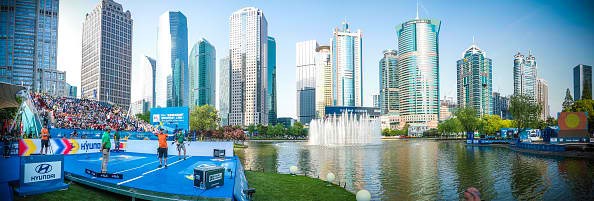Ahead of the G20 summit and to show that China is serious about liberalization, seven more free trade zones (FTZ) were declared, bringing the total to 11.
Commerce Minister Gao Hucheng told state media that the government declared, among others, FTZ's like Northeast China's Liaoning, East China's Zhejiang, Northwest China's Shaanxi and Central China's Henan. This is the first time that inland regions were included in the list of FTZs.
He said, "The FTZs, covering bigger areas and a wider range of industries, will have their own characteristics and help deepen reforms.
In 2013, Shanghai was the first FTZ to be opened. This was followed by Guangdong Province, East China's Fujian Province and North China's Tianjin Municipality in 2015.
Wang Danqing, a partner of ACG Management, said, "The newly approved zones in the inland regions, which will serve larger areas, will not only further deepen reform and opening-up in China, but will also have their own characteristics to boost local economic development."
The Liaoning FTZ is expected to increase competition in Northeast China and establish strong economic ties with Russia, South Korea and Japan.
The FTZ is hoped to boost the slow economic growth in the country.
Formation of the new GTZs is also sending a message to the participants of the G20 Summit. China is serious about freeing up its market.
"China wants to show other countries' leaders ahead of the G20 event that it strongly supports trade liberalization and is determined to advance opening-up in the country," he said.
Establishment of FTZs is welcomed by the private sector. Business owners said that FTZs helped their enterprises grow.
According to Chang Zhaohua, chief executive of Shanghai-based MicroPort Medical, city's free-trade zone helped his company save up to 20 percent on interest payments linked to its acquisition of a foreign company since Shanghai became an FTZ.



























